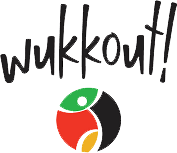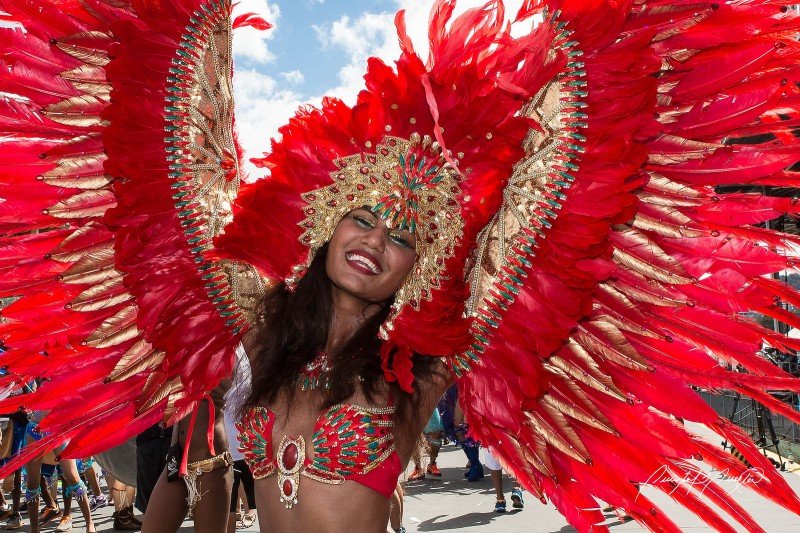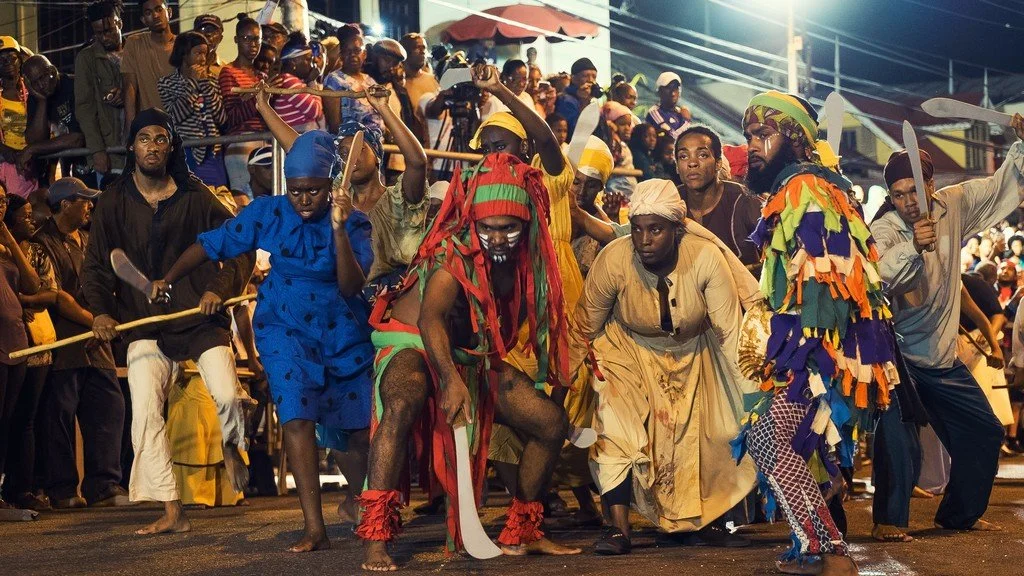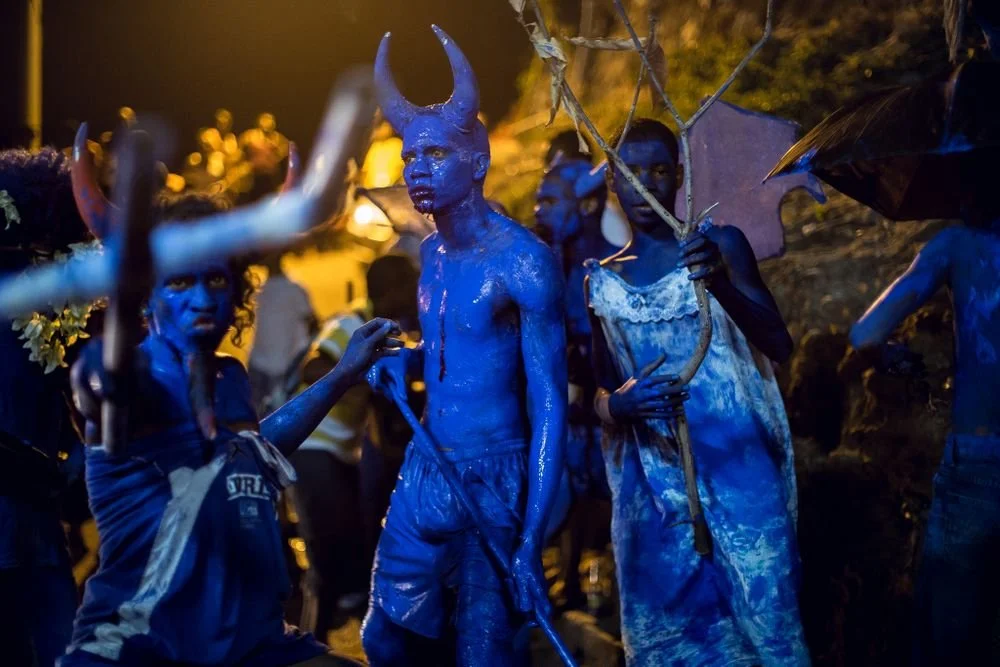CARNIVAL
Thoughts with Roxy Menzies
We love soca, fitness, dancing, joy, and community! All qualities that make up the essence of a good sweaty Wukkout! Class. We also know a soca based workout is rooted in Caribbean carnival, but what do we actually know about Carnival?
Around the world, through the African Diaspora – from Caribana in Toronto to London’s NottingHill Carnival or Brooklyn’s West Indian Carnival, millions of people from all walks of life come out and ‘jump up!’. When we think of Carnival we think of beautiful people, colourful elaborate costumes and soca and calypso music.
Each Caribbean festival encapsulates its own style. Which is expected when things morph and change due to geographical placement and mixing of cultures. But roots run deep and the history of Carnival is a fascinating and intricate one that is based on culture, rebellion, celebration, and reclamation.
Ask anybody from the West Indies and they’ll tell you the biggest Carnival is in Trinidad. West Indians are a proud people but distinctive of what is theirs. A Jamaican will let you know that they birthed reggae while Trinidad and Tobago birthed soca.
Some articles suggest that Carnival is derived from pagan festivals in ancient Egypt and was later adopted by the Roman Catholic church in Europe. It became the festival of CarneVale. It is said that the festival was brought to the Caribbean by European slave traders.
We also know that throughout Africa, traditional rituals that celebrate life and spirituality include music, costume, and dancing – very much their own form of carnival.
While much of the connections to their heritage (the African slaves) was prohibited, elements of it lived on. We see remnants of it in Carnival, numerous festivals, and through Afro-Caribbean dance companies that carry on and showcase the traditions.
Scenes from Kambule. Photo by Merten Kaatz
In Trinidad, the enslaved imitated (and mocked) their French captors’ masquerade balls and religious ceremonies to uphold their own traditions against oppression. Canboulay was originally a means to gather the enslaved at night to put out fires in neighboring cane fields. It became a procession accompanied by drumming, call and response singing, and stick fighting.
After emancipation, roughly between 1834 and 1838, (there was an “apprenticeship” period for former slaves) Carnival, with a big influence of Canboulay, became a celebration of the end of slavery.
Free but under British rule, they had to fight against oppression, control, and attempts to abolish Carnival. The infamous Canboulay riots have been said to solidify the yearly festival that continues today. It’s a reminder of the evils of slavery, survival, victory, and an ode to ancestral ritual.
Much of what is perceived in the media are the bright, feathered, and shiny costumes, but the traditions of Canboulay involve fire, stick fighting, and majestic costumes (often considered vulgar in the media).
© Miquel Galofré
Costumes with massive horns and chains, painted devils or groups of people covering their bodies in oil are all a part of Carnival across the West Indies.
Carnival is much more than a street party!
Carnival’s roots are about survival, resistance and victory. It is rooted in history; a legacy that runs deep and connects us to ancestral ritual. It is a celebration, it is joy, and it’s remembrance.
** This blog post is but a glimpse into the intricacies of Carnival history. For more please check @knowyourcaribbean
REFERENCES
La Rose, Michael. “History of the Caribbean Carnival”. Charleston Carifest. 23, Jan. 2015.
https://charlestoncarifest.com/information/history-of-the-caribbean-carnival/
Anthony, Michael. “South Canboulay Riots Hotter than North’s”. TriniView. 4, March 1984.
http://www.triniview.com/articles/canboulay.html
Instagram account @knowyourcaribbean by Fiona Compton
Writer, dancer, and educator; Roxy Menzies has been around the globe infusing artistry, knowledge and soul into her work with movement. When she isn't working on her first book about the 1st Black Pilates elder, who was instrumental in the world of dance -- she's ready to grab har flag and wine it like nobody's watching!



